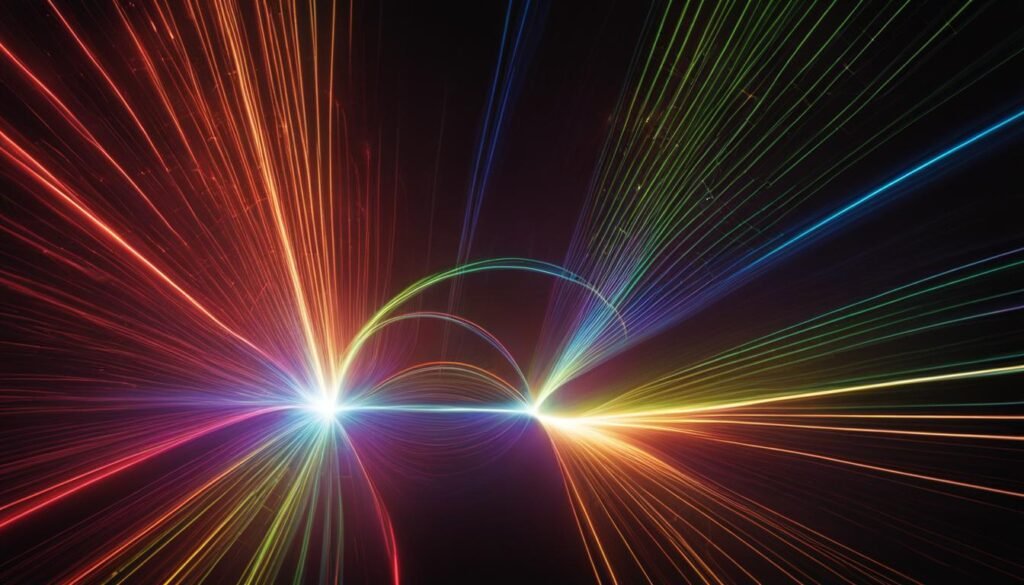Contents
Laser technology has evolved tremendously, giving rise to various modes of lasers that offer unique advantages in different applications. Two commonly used laser modes are step synchrone and fixed mode lasers. In this article, we will delve into the dynamics and applications of these laser modes, shedding light on their significance in laser technology.
Key Takeaways:
- Step synchrone lasers operate based on rational-harmonic mode-locking.
- Fixed mode lasers operate continuously and are pumped asynchronously.
- Step synchrone lasers are ideal for high-frequency pulse generation.
- Fixed mode lasers are suitable for applications that require continuous wave output.
- Both laser modes play crucial roles in various industries, including laser processing and communications.
Understanding the Dynamics of Step Synchrone Lasers
Step synchrone lasers operate based on rational-harmonic mode-locking. This means that the pump and laser cavity lengths have a ratio that is a rational number, resulting in the generation of output pulses at rational harmonics of the pump repetition frequency. By adjusting the cavity lengths, pulse repetition rates up to 1.1 GHz can be achieved. The dynamics of step synchrone lasers have been extensively studied and modeled using rate equations. These lasers are particularly useful for applications that require high frequency pulse generation, such as optical parametric oscillators and dye lasers. The precise synchronization of the pump and laser pulses allows for efficient energy transfer and stable operation.
Pulse Repetition Frequency and Rational Harmonics
In step synchrone lasers, the rational-harmonic mode-locking phenomenon enables the generation of output pulses at rational harmonics of the pump repetition frequency. This means that the pulse repetition frequency can be precisely controlled by adjusting the cavity lengths. By choosing specific ratios of pump and laser cavity lengths, different rational harmonics can be achieved. For example, a step synchrone laser with a pump repetition frequency of 100 MHz and a cavity length ratio of 1:3 can generate output pulses at a repetition frequency of 300 MHz (3 times the pump repetition frequency).
This ability to control the pulse repetition frequency and generate pulses at rational harmonics is crucial for various applications. It allows for the synchronization of the laser pulses with other devices or systems, enabling precise timing and coordination. Additionally, the high frequency pulse generation capability of step synchrone lasers opens up possibilities for advanced laser-based technologies, such as high-speed communications and ultrafast spectroscopy.
| Pulse Repetition Frequency (PRF) | Cavity Length Ratio | Rational Harmonic |
|---|---|---|
| 100 MHz | 1:3 | 300 MHz |
| 200 MHz | 2:5 | 400 MHz |
| 500 MHz | 1:4 | 1250 MHz |
| 1 GHz | 3:7 | 3 GHz |
The table above illustrates the relationship between pulse repetition frequency, cavity length ratio, and the resulting rational harmonics in step synchrone lasers. By manipulating these parameters, researchers and engineers can tailor the laser output to meet the specific requirements of their applications, optimizing performance and functionality.
The dynamics of step synchrone lasers, driven by rational-harmonic mode-locking, provide a powerful tool for high-frequency pulse generation. Through precise control of the pump and laser cavity lengths, these lasers enable the generation of output pulses at rational harmonics of the pump repetition frequency. This capability opens up a wide range of applications in fields such as telecommunications, spectroscopy, and materials processing, where high-frequency, synchronized laser pulses are required for optimal performance. The ongoing research and development in step synchrone laser technology promise even greater advancements in the future, further expanding the potential applications of these innovative lasers.
Exploring the Applications of Fixed Mode Lasers
Fixed mode lasers offer a unique approach to laser technology with their asynchronous pumping and continuous wave operation. Unlike step synchrone lasers, which rely on rational-harmonic mode-locking, fixed mode lasers operate continuously even when pumped by a mode-locked source. The pump and laser round trip times are intentionally set far from a harmonic resonant condition, resulting in a continuous laser beam.
The continuous wave operation of fixed mode lasers makes them highly suitable for a wide range of applications. One notable application is laser processing, where a constant and uninterrupted laser beam is essential for precision cutting, welding, and engraving. Additionally, fixed mode lasers find utility in laser spectroscopy, a field that relies on the accurate measurement of light absorption and emission from materials. The continuous operation allows for detailed analysis and characterization of various substances. Furthermore, in the field of laser communications, fixed mode lasers enable reliable and uninterrupted transmission of data over long distances.
The advancements in fixed mode laser technology have significantly improved their efficiency and reliability, making them indispensable tools in various industries. From manufacturing to scientific research, the continuous operation offered by fixed mode lasers opens up new possibilities for laser applications. As technology continues to advance, we can expect even greater advancements in fixed mode lasers, paving the way for enhanced performance and expanded applications.



